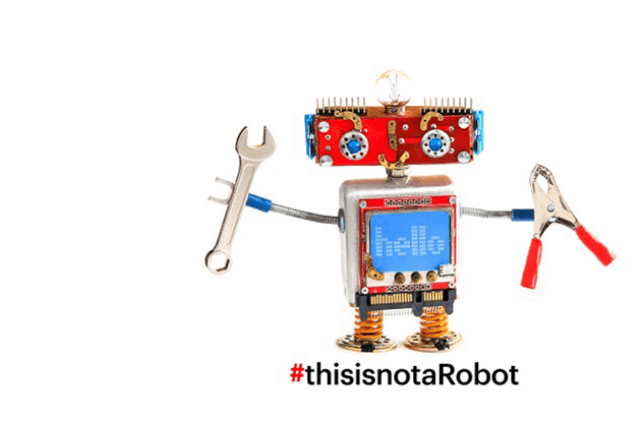I joined Accenture shortly before it was ranked #1 in the 2016 HfS RPA Premier League Table for Transformation Enabler. At that time, my knowledge of RPA was close to zero but my interest grew in parallel with the experience I accumulated. I am now fully convinced of the benefits of this technology and the impact it will have on future productivity.
This 7-step introduction to RPA is designed to dispel some urban myths. It’s the start of a journey in which I will share some of the challenges and benefits of RPA, best practices and success stories based on my experience at Accenture.
1. There are no physical robots involved
RPA is an entirely software-based technology, so don’t expect to see tiny robots coming to your office anytime soon! The robots are installed on normal computers such as your laptop or workstation. At a larger scale, they can also be deployed in server environments and/or virtual machines (including in the Cloud) – making flexibility one of RPA’s greatest strengths.
2. RPA emulates human execution
The core thing a robot does is to emulate human execution. That is, it performs tasks on a computer like a human does: launching applications, surfing the web, copy/pasting information, filling in forms, you name it. In other terms, imagine one of those self-playing pianos, but for your computer.
As such, you can configure a robot to execute a typical business process, or parts of it. Of course, there are some limitations to what a robot can do, both technically and cognitively, which means that not everything can be automated. At Accenture, we have common suitability and eligibility criteria to tackle these questions.
3. Robots use regular user interfaces
The way a robot manages to emulate human execution is by using the regular user interfaces on your computer (note to non-techies: the “regular user interface” is the normal application windows you have on your PC, including the buttons, fields, etc. you use to interact with them). This is incredibly powerful because it means that you do not require privileged or backdoor access to an application to be able to interact with it. The robot can interact with almost any type of application such as web apps, Java, win32 or even mainframes (and there are far more lying around than you would expect).
The downside of this is that the execution speed of the robot is limited by the application because it is subject to the same loading times and latencies as regular human users. Nevertheless, a robot is still generally much faster than its human counterpart.
4. RPA is a non-invasive technology
You should think of RPA as an extra layer on top of your existing technology stack. A robot is like any other worker in your organisation, carrying out tasks by using the same applications as you do. There is no need to rewrite legacy software or integrate RPA with business-critical systems, as they are most likely to be supported out of the box. As such, it is a non-invasive technology.
“A start to end delivery of RPA from analysis to deployment can be as short as two weeks.”
Interested to know more? Read the full article on Accenture-insights.lu
Tolga Bayrak, Software Engineering at Accenture Luxembourg
